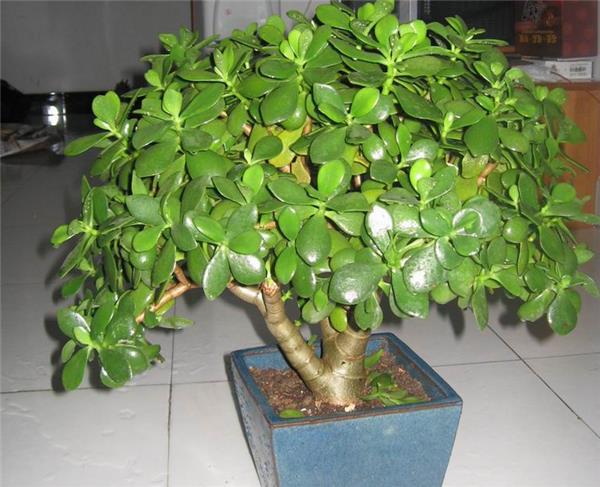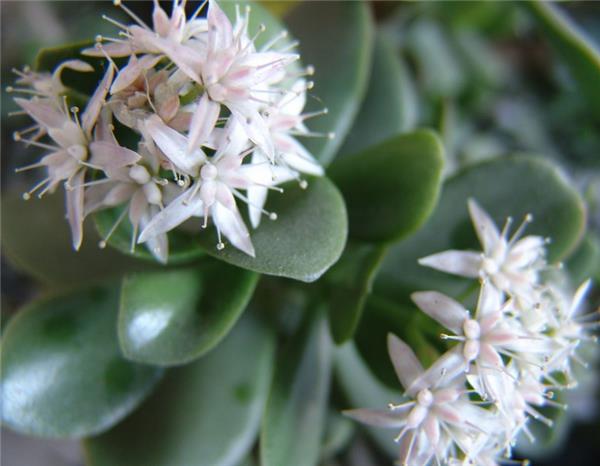Yushu breeding methods and precautions
Yushu, also known as crassulaceae, evergreen or glass jade, is a succulent subshrub of the genus crassulaceae, which has a good appreciation value and is often used as an indoor decorative bonsai. Here we introduce the breeding methods and matters needing attention of Yushu.

Culture methods of Yushu
1. Basin soil requirements: the most suitable time for changing basin soil and planting time is early spring. The basin soil should be loose, fertile and well drained. 2 parts of rotten leaf soil or peat soil, 2 parts of garden soil, 3 parts of coarse sand, 1 part of limestone and gravel, or 3 parts of rotten leaf soil, 3 parts of garden soil, 3 parts of coarse sand, 1 part of bone powder and 1 part of plant ash can be selected as basin soil.
2, temperature requirements: the temperature between 20-30 degrees is most conducive to the growth of Yushu. Spring and autumn are the most suitable growing periods for Yushu. Yushu is afraid of bright lights. When the temperature is high in summer, you should pay attention to keep the plants in the shade to avoid direct sunlight. When the environmental temperature of Yushu is higher than 38 degrees, the growth rate will begin to slow down and even enter a short period of dormancy. In winter, we should pay attention to the temperature, put the plant in the greenhouse, preferably in a place with light. The room temperature should not be lower than 7 degrees. Below 0 degrees will cause the plant to freeze to death. Yushu, which is in its growing period, needs shade except for the high temperature and heat in summer. All should be kept in a sunny place.

3. Watering requirements: when Yushu is in the growing period, the watering frequency should be controlled every two to three days. Can not have the phenomenon of stagnant water should also avoid the basin soil is too wet. Yushu should be cultivated in summer to control the number of watering, and to strengthen ventilation, so as to avoid the phenomenon of fallen leaves. It is necessary to reduce watering when raising Yushu in winter. The specific principles depend on the dry and wet conditions of the basin soil. Micro-drying is better for basin soil.
4. Fertilization requirements: proper fertilization can be applied in the growing period of Yushu. Generally, the rotten thin cake liquid fertilizer is applied 2 or 3 times a month. Adequate base fertilizer should be applied before soil change or planting. Mature organic fertilizer, such as chicken manure, pigeon manure, bone meal, large manure and all kinds of cake fertilizer, can be added to the culture soil as base fertilizer. In order to keep the plant shape plump, the fat and water should not be too large, so as not to cause overgrowth.

Matters needing attention in Yushu Culture
1. Yushu basin soil requires good drainage, but it should not be too easy, otherwise it is easy to lodge when you grow up. Avoid outdoor rain and stagnant water in the plum rain season, and during the half-dormant period from July to August, watering should also be strictly controlled, otherwise the roots are easy to rot. It should be dry rather than damp in winter, and the basin soil should be slightly moist.
2. The branches and leaves of Yushu contain a lot of Euphorbia officinarin. the sap from the branches and leaves of the human body will cause skin redness, swelling, pain and blistering, and blindness can be caused if it is accidentally splashed in the eyes.
3, summer can be properly shaded to prevent heat and cool down, other seasons should fully see the light. Basin soil should be dry rather than wet, pay attention to rain protection, basin soil should be relatively dry in winter, pay attention to ventilation to prevent defoliation.
4. Move indoors in the middle of October and place a warm place with sufficient light. The minimum overwintering temperature should not be less than 5 degrees Celsius. Watering should be strictly controlled to keep the basin soil from getting dry. Turn the basin every half month to avoid the deviation of branches and leaves, affecting the appearance, such as lack of light, we should pay more attention to prevent damp and hot rotten roots and defoliation.
5. Yushu likes loose sandy culture soil, avoid planting seedlings propagated when the soil is too wet, transplant when the temperature is high, the pot time should be early summer, after resuming seedlings, should not pour too much water, should not put in the shade.

Control of Diseases and insect pests in Yushu Culture
1. Yushu leaf spot
Symptoms: the disease occurs on the leaves of Yushu. It is easy to occur in high humidity weather. The plaque is brown at first, the periphery is water-immersed and faded green, and expands in the shape of a wheel, round to oval, and the edge is brown and gray-white. In the later stage, black-brown mildew spots appeared in the center of the lesion, and turned into a dark-brown mildew layer under wet conditions.
Prevention and treatment methods: timely removal of diseased and residual leaves; 0.5%-1% Bordeaux solution (or 50% carbendazim 1000 times) can be sprayed in the early or later stages of the disease.
2. Anthracnose in Yushu
Symptoms: the disease also occurs on the leaves of Yushu and can spread to the petiole in severe cases. In the initial stage, the plaque showed a flooded small macula, and after expansion, it was oval to irregular brown or yellowish brown, slightly rimmed, and in the later stage, the plaque became dry and produced small black spots arranged in wheel patterns. The main cause of this disease is poor ventilation.
Prevention and control methods: strengthen maintenance, increase the application of phosphorus and potassium fertilizer; at the initial stage of the disease, 0.3% 0.5% Bordeaux solution (or 60% Dysen zinc 800 times 900 times, or 70% topiramine 1500 times) can be sprayed.
3. Brown soft scale
Symptoms: when soft scale harms plants, it generally clusters on the leaves or tender leaves, sucking plant sap and excreting mucus at the same time. Its excretion can easily cause a large number of coal fouling bacteria to multiply, make stems and leaves black, affect plant photosynthesis, and cause weak growth potential. Leaves withered and yellow, hindering viewing. When the occurrence is serious, the branches and stems are covered with insect bodies, resulting in the withering and yellowing of the plant and affecting the growth.
Control methods: if there are few damaged plants, or the number of insects is not much, generally use bamboo and other things to scrape off the insect body.
Or 70% topiramate 1500 times liquid) spray.
3. Brown soft scale
Symptoms: when soft scale harms plants, it generally clusters on the leaves or tender leaves, sucking plant sap and excreting mucus at the same time. Its excretion can easily cause a large number of coal fouling bacteria to multiply, make stems and leaves black, affect plant photosynthesis, and cause weak growth potential. Leaves withered and yellow, hindering viewing. When the occurrence is serious, the branches and stems are covered with insect bodies, resulting in the withering and yellowing of the plant and affecting the growth.
Control methods: if there are few damaged plants, or the number of insects is not much, generally use bamboo and other things to scrape off the insect body.
Related
- Wuhan Hospital Iron Tree Blooming Result Was Instantly Frightened by the Gardener Master
- Which variety of camellia is the most fragrant and best? Which one do you like best?
- What is the small blue coat, the breeding methods and matters needing attention of the succulent plant
- Dormancy time and maintenance management of succulent plants during dormancy
- Minas succulent how to raise, Minas succulent plant pictures
- What are the varieties of winter succulent plants
- How to raise succulent plants in twelve rolls? let's take a look at some experience of breeding twelve rolls.
- Attention should be paid to water control for succulent plants during dormant period (winter and summer)
- Watering experience of twelve rolls of succulent plants
- Techniques for fertilizing succulent plants. An article will let you know how to fertilize succulent plants.



